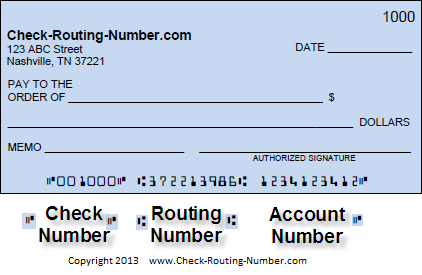Check Routing NumberBank checks usually contain three sets of numbers printed in magnetic ink at the bottom of the check. Business checks usually have the check number printed first, followed by the routing number, followed by the bank account number last. 
Personal checks usually use a different number order, with the routing number appearing first, followed by the account number, followed by the check number.
The first four digits of a routing number used to be assigned by the Federal Reserve Routing system and represented the bank's geographic location. Due to bank mergers and aquisitions, these numbers don't always now correspond to the bank's location. The next two digits specify which Federal Reserve bank the institution's electronic and wire transfers route through. Digit eight designates which Federal Reserve district the bank is located in. Digit nine is a check sum digit. All of the digits are printed using magnetic ink in the MICR E-13B character set. |
Copyright © 2013-2015 - Check-Routing-Number.com
 With business checks, the check number is preceeded and followed by an OCR-Dash symbol that
looks like (seen at right) a quote, followed by a dot. Personal checks usually just have this
symbol following the account number.
With business checks, the check number is preceeded and followed by an OCR-Dash symbol that
looks like (seen at right) a quote, followed by a dot. Personal checks usually just have this
symbol following the account number.
 Check routing numbers are 9 digits long, preceeded and followed with a symbol that looks like (seen at right)
a bold vertical dash and colon symbol. Routing numbers are assigned by the American Bankers Association. It
is possible to identify the bank using the routing number of the bank.
Check routing numbers are 9 digits long, preceeded and followed with a symbol that looks like (seen at right)
a bold vertical dash and colon symbol. Routing numbers are assigned by the American Bankers Association. It
is possible to identify the bank using the routing number of the bank.